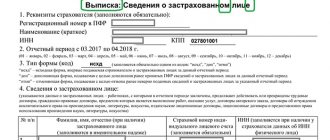Transport tax for organizations from 2020
Transport tax for legal entities refers to regional types of tax payments and is regulated at the federal level (Chapter 28 of the Tax Code), as well as local (regulatory legal acts of the authorities of the constituent entities of the Russian Federation). In accordance with stat. 356 of the Tax Code, regions approve TN rates, terms of payment, benefits and legal grounds for their application. In this case, the restrictions provided for by the Tax Code must be taken into account.
Who exactly is recognized as the taxpayer of this tax? According to stat. 357 of the Tax Code, transport tax for organizations is obligatory for payment if they own vehicles registered in the generally established order. Objects subject to taxation are listed in stat. 358. In particular, these are cars and trucks, motorcycles, buses of various sizes, boats, airplanes and helicopters, and other self-propelled vehicles of land, air and water types (clause 1 of Article 358). The list of non-taxable objects is given in paragraph 2 of the statute. 358.
Timely calculation of transport tax for legal entities is carried out separately for each object registered in the name of the owner (clause 2 of Article 362). Enterprises, unlike individuals, accrue TN on their own, including advance amounts. If the regional authorities do not approve reporting periods in a particular subject of the Russian Federation, the car tax is transferred to the budget in a single amount at the end of the year. Moreover, in accordance with the Tax Code, the tax period is a year (calendar), and the reporting period is quarters (stat. 360).
Will the transport tax for legal entities change in 2020? At the moment, there are no global innovations observed. No one canceled the TN, and the replacement with another fee also did not take place. As before, regional authorities are in charge of administration, approving final rates and payment deadlines. However, some innovations were nevertheless adopted by officials. The changes will affect owners of prestigious expensive cars worth 3-5 million rubles. The size of the increasing coefficient for them is set at a minimum level of 1.1 (stat. 362 of the Tax Code as updated by Law No. 355-FZ of November 27, 2017). Currently, the coefficient is 1.1, 1.3, 1.5.
Another change applies to the tax return form for TN, which was approved by the Federal Tax Service in Order No. ММВ-7-21/668 dated 12/05/16. The document was adopted in 2020, but in practice all legal entities are required to submit a new form when submitting information for 2020. Sections about payments to Platon, lines about the year of manufacture of the vehicle, information about the registration of the object and/or deregistration from state registration have been added to the form.
Rules for filling out a transport tax return
You should start the registration procedure with the title page, then carry out the calculation in the 2nd section and show the calculation results in the 1st section.
There are specific requirements for the preparation of this report, enshrined in the appendix to the above order of the Federal Tax Service:
- cost values are rounded to the nearest ruble;
- all sheets are numbered in order, including the first title page;
- making changes to the declaration through proofreaders is prohibited;
- the color of the information to be filled out should be blue or black;
- when filling out manually, letters must be written in capital letters;
- It is not allowed to print the declaration on both sides of one sheet;
- It is not allowed to staple printed report sheets;
- Only one value (letter, sign, number) is entered in each cell;
- indicators are filled in starting from the left cell;
- empty cells are filled with a short line in the center of the cell;
- when filling out typescript, you must set the courier new font size 16 or 18;
- When printing a declaration prepared using software, there may be no cell boundaries or dashes.
The report can be submitted to the tax office by electronic transmission via TKS or by submitting a paper version in person or through an authorized representative. It is also possible to send it by a valuable letter, including an inventory of the contents of the letter, as well as with acknowledgment of delivery.
| ★ Best-selling book “Accounting from scratch” for dummies (understand how to do accounting in 72 hours) > 8,000 books purchased |
Transport tax - tariffs
The final tariff rates are adopted by regional authorities, taking into account the maximum/minimum restrictions under stat. 361. An increase in tariffs for certain types of vehicles in the Leningrad region has already been approved. and St. Petersburg, Ulyanovsk region, Arkhangelsk, Kirov and Kostroma. To know exactly how to calculate transport tax for legal entities, you need to clarify the interest rate for vehicles registered to the company. In this case, information is taken from the current version of the regional law.
The declaration has been cancelled, but calculations need to be made
The last time organizations that have a vehicle registered with the State Traffic Safety Inspectorate submit reports for 2019 to the Federal Tax Service no later than February 1, 2020 (clause 1 of Article 363 of the Tax Code of the Russian Federation). Federal Law No. 63-FZ of April 15, 2019 canceled the submission of declarations in subsequent years.
And already in 2021, inspectors themselves will calculate the payable amount of transport tax for 2020 and notify the legal entity about it. Such messages are of an informative nature and must be submitted by officials within 6 months after the legally established last day for making payments to the relevant budget.
Information. Despite the fact that the submission of the declaration has been canceled for 2020, calculations of mandatory payments by legal entities must be carried out as before.
Calculations must be made to:
- make advance payments for each reporting period in 2020 (quarter, half-year, 9 months), if they are provided for by the law of the constituent entity of the Russian Federation;
- pay the amount on time at the end of the year, taking into account advance payments;
- compare the accrual with the one reported by the federal service, and in case of a discrepancy, find out the reason in a timely manner and resolve the differences with the Federal Tax Service.
- Local authorities from 01/01/2021 are deprived of the right to set tax payment deadlines (No. 325-FZ dated 09/29/2019). The following is defined for all organizations:
- the annual payment is made to the budget no later than March 1;
- The advance payment is paid until the end of the month following the reporting period.
If the tax is not paid on time, the organization may be fined 20% of the debt (clause 1 of Article 122 of the Tax Code of the Russian Federation). Penalties will also be charged in the amount of 1/300 of the Central Bank refinancing rate in the first month. Starting from the 31st day of non-payment, they will be 1/150 of the bank rate.
Where to pay transport tax for legal entities
Transfer of TN based on the results of the year and quarters (in case of approval of reporting periods in a separate subject of the Russian Federation) is carried out to the regional budget at the address of the vehicle location (clause 1 of Article 363). The last address for all means of transportation, except for water ones, is the address of the location of the enterprise or OP (Article 83). If an organization is obligated to pay advances under the Taxpayer Agreement, such amounts reduce the total tax for the year.
The timing of the transfer of transport fees is regulated by the regions of the Russian Federation. In this case, the final payment date cannot be approved in the subject earlier than February 1 of the next year (clause 1 of Article 363). Here is a link to the stat. 363.1, which discusses the procedure for submitting a declaration. Accordingly, in the region, the deadline for transferring TN should not be set earlier than the date of filing the declaration, that is, earlier than February 1 (clause 3 of Article 363.1).
What has changed in the transport tax return form in 2020
The new version of the declaration came into effect on February 20, 2019, so you definitely did not make a mistake if you reported for 2020 using the old form. The current form is approved by Order of the Federal Tax Service of the Russian Federation dated December 5, 2016 No. ММВ-7-21/ [email protected]
The composition of the new declaration has not changed in general. The declaration still has a title page and two sections. What's added:
- The barcodes on the declaration form have changed;
- Line 280 reflects the tax deduction code for a heavy vehicle weighing more than 12 tons;
- Line 290 reflects the amount of tax deduction in rubles in relation to heavy cargo.
These changes apply to 2020 returns.
As for the zero declaration for this tax, Chapter 28 of the Tax Code of the Russian Federation does not say anything about the mandatory submission of zero tax returns.
Transport tax for legal entities – payment deadlines in 2018
As a rule, the deadlines for transferring TN for reporting periods are approved before the last day of the next calendar month. For example, in the Rostov region. advances for the 1st, 2nd and 3rd quarters must be paid before 05/03/18, 07/31/18, 10/31/18. Moreover, if the last date of the month falls on a weekend or official holiday, the payment date is shifted to the first working day.
The final payment for TN for 2020 must be made by legal entities no earlier than 02/01/18. The deadlines adopted by the regional authorities are mandatory for all taxpayers. In case of violation, penalties are charged on the amount of arrears in accordance with the requirements of tax legislation for each day of delay. How is transport tax calculated for legal entities? More on this below.
Second section of the declaration: procedure for filling out
In this section, the taxpayer must provide information about a car or other vehicle. In this part, the taxpayer provides the following information:
- Cell 020 – territorial value according to OKTMO.
- Cell 030 – vehicle code value; this value can be found in the reference book.
- Cell 040 is an individual number for your product, which is determined by the technical documentation.
- Cell 050 – vehicle make.
- Box 060 – registration number.
- Cell 070 – depending on the type of transport, indicate the tax base.
- Cell 080 – code value of the unit of measurement of the tax base.
- Cell 090 – environmental class.
- Cell 100 – number of years from the date of production of the vehicle.
- Cell 110 – the number of months in one reporting year when the vehicle was actually used.
- Cell 120 is the value of the ratio of the number of months of actual use of the vehicle to the number of all months of the year.
- Cell 130 – tax rate.
- Box 140 – the amount of tax that must be paid.
- Cell 150 – number of months when the benefit was used.
- Cell 160 is a coefficient value that demonstrates the period of validity of the benefit over the entire service life.
- Cell 170 is the benefit code that is being used.
- Cell 180 – the amount of the tax benefit.
- Cell 190 is the code of the benefit that the taxpayer uses.
- Cell 200 – benefit amount.
- Cell 210 – benefit code that is applied at a reduced rate.
- Box 220 – tax benefit amount.
- Box 230 – the amount that the taxpayer intends to pay to the budget.
Filling out a transport tax return can sometimes result in errors. In this case, each correction must be certified with the personal signature of the taxpayer.
Similar articles
- How to fill out a transport tax return?
- Transport tax declaration: form and sample
- Unified simplified tax return 3rd quarter 2017
- Sample of filling out a land tax return
- Tax return for transport tax: general provisions
Calculation of transport tax for legal entities
The procedure for calculating TN and advances is defined in stat. 362 NK. For the calculation, indicators of the tax base of the transport facility and the current rate in the region are taken. Additionally, the values of the increasing coefficient and the coefficient of actual vehicle ownership for the tax period are taken into account. The general calculation formula is as follows:
TN = NB x St in % x PovK x FactK, where:
TN - transport tax,
NB – facility power in liters. With. (for auto),
St. in % - the rate for the object in %, valid in the region,
PovK - increasing coefficient for premium cars according to clause 2 of the stat. 362,
FactK – coefficient of actual vehicle ownership for the tax period. Calculated according to the rules of clause 3 of stat. 362.
If an enterprise has several vehicles, the tax is determined separately for each. The results of the calculations are presented to the Federal Tax Service at the place of registration of the car owner in the form of a declaration for the tax period, that is, the calendar year.
Taxes and business activities
Appendix 2 Approved by order of the Ministry of Revenue and Duties of the Donetsk People's Republic dated February 12, 2016 No. 40
The procedure for filling out and submitting a tax return for transport tax by legal entities
I. General provisions
1. Submission of a tax return for transport tax (Appendix 1) (hereinafter referred to as the declaration) is provided for in clause 100.1 of Article 100 of the Law of the Donetsk People’s Republic “On the Tax System”.
2. Tax reporting for transport tax includes:
— tax return for transport tax (reporting, new reporting);
— clarifying tax return for transport tax.
3. A tax return is submitted by a legal entity that is a payer of transport tax (hereinafter referred to as the taxpayer) in accordance with clause 93.1 of Article 93 of the Law of the Donetsk People's Republic “On the Tax System” to the relevant territorial body of revenues and fees of the Ministry of Revenue and Duties of the Donetsk People's Republic at the place of registration vehicle.
II. Reporting period and deadlines for submitting the declaration
1. The base reporting period for transport tax, in accordance with clause 96.1 and clause 96.3 of Article 96 of the Law of the Donetsk People's Republic “On the Tax System”, is the calendar year, which begins on January 1 and ends on December 31 of the same year (for newly formed enterprises, institutions and organizations, as well as in connection with the acquisition of ownership of vehicles, the reporting period may be less than 12 months.
2. The tax period for business entities - legal entities in accordance with clause 96.2 of Article 96 of the Law of the Donetsk People's Republic “On the Tax System” is a calendar quarter.
3. In accordance with clause 100.1 of Article 100 of the Law of the Donetsk People’s Republic “On the Tax System”, tax payers - legal entities no later than January 31 of the current year, submit to the relevant territorial body of income and fees at the place of registration of the vehicle a declaration for the current year according to the established form, with a breakdown of the annual amount in equal parts by quarter.
4. In the case of the acquisition/sale of vehicles during the reporting (tax) period, the tax payer - a legal entity, in accordance with the requirements of clause 100.2 of Article 100 of the Law of the Donetsk People's Republic “On the Tax System”, submits a clarifying tax return to the relevant revenue and duties authority.
5. If, after filing a reporting tax return, a taxpayer, before the deadline for submitting such a return for the same reporting period, identifies errors contained in his previously submitted tax return, then he submits a “New reporting” return with corrected indicators.
III. Procedure for completing and submitting a tax return
1. The declaration is submitted by the taxpayer or an authorized person.
2. The tax return is drawn up on A4 size sheets.
3. All line values in the declaration can only be positive.
4. In lines where there is no data to fill in, a dash must be inserted.
5. All indicators in tax reporting are entered in Russian rubles without kopecks (according to rounding rules).
6. The accuracy of the declaration data is confirmed by the signature of the head of the legal entity or an authorized person, as well as the person who is responsible for maintaining accounting records and submitting the declaration;
7. Signatures are sealed.
IV. The procedure for filling out a tax return for transport tax
1. In the “Declaration Type” field, the corresponding type of the submitted declaration “Reporting”, “New reporting” or “Clarifying” is indicated.
2. In the “Reporting period” field, the year for which the declaration is being submitted is indicated, and then in the “Starting from ____” field, the month is indicated in Arabic numerals and is filled in if a declaration is submitted for vehicles purchased during the reporting year or received in the event of a transfer of ownership (possession) of vehicles during the reporting year. The field “taking into account clarifications from ____” is also filled in if the amount of previously accrued tax is specified.
3. The “Sequence number for the year” field reflects the number, cumulatively, of the number of submitted corresponding declarations.
4. In the field “RZ USR code” the number of the registration entry in the unified state register of a legal entity is indicated in accordance with the registration documents.
5. In the field “Code of the type of economic activity (KVED)” the code of the main type of activity of the legal entity is indicated
5. In the “Name of Payer” field, the full name of the legal entity - the tax payer is indicated according to the registration documents.
6. In the fields “Legal address of the payer”, “Telephone” and “E-mail” indicate the address at which the legal entity is registered as a taxpayer according to the registration data, contact telephone number and email address of the legal entity - the taxpayer.
7. In the field “Name of the territorial body of the Ministry of Revenue and Duties of the Donetsk People’s Republic” the name of the territorial body of the Ministry of Revenue and Duties of the DPR to which the reporting is submitted (at the place of registration (registration) of vehicles) is indicated.
Calculation of the amount of transport tax.
8. Taxpayers independently annually, as of January 1, calculate the amount of tax (clause 98.2. Article 98 of the Law of the Donetsk People’s Republic “On the Tax System”) for taxable items, taking into account the requirements of clauses 94.1 and 94.2 of Article 94 of the Law of the Donetsk People’s Republic “On tax system."
9. The payer fills out the table indicators for each vehicle registered in accordance with the legislation of the Donetsk People's Republic.
10. In the column “Make and model of the vehicle”, column “Vehicle license plate”, column “Year of manufacture of the vehicle”, column “Date of registration of the vehicle”, column “Engine cylinder capacity in cubic centimeters, engine power, length” the relevant data for an individual vehicle is indicated according to its registration documents.
11. In the column “Number of years that have passed since the year of manufacture of the vehicle”, a number is indicated that determines the number of years that have passed since the year of manufacture of the vehicle. The specified quantity is determined as of January 1 of the current year in calendar years, starting from the year following the year of manufacture of the vehicle.
12. In the column “Number of full months of vehicle ownership” the calculated number of full months of vehicle ownership is indicated. In this case, the month of registration of the vehicle, as well as the month of deregistration of the vehicle, is taken as a full month. This column is filled in if the vehicle registration and/or deregistration of the vehicle (deregistration, etc.) occurred during the tax (reporting) period.
13. In the column “Coefficient applied to a newly acquired or deregistered vehicle” the coefficient is indicated if the registration of the vehicle and/or deregistration of the vehicle (deregistration, etc.) occurred during the tax period ( reporting) period. This coefficient is defined as the ratio of the number of full months during which the vehicle was registered to the taxpayer to the number of calendar months in the tax (reporting) period. In this case, the month of registration of the vehicle, as well as the month of deregistration of the vehicle, is taken as a full month. In case of registration and deregistration of a vehicle within one calendar month, the specified month is taken as one full month.
14. In the column “Tax rate for the year” the corresponding rate established for the year is indicated depending on the engine power, jet engine thrust or gross tonnage of vehicles, category of vehicles based on 100 cubic meters. cm of engine cylinder capacity, with 1 kW of engine power or 100 cm of length of a vehicle unit in the dimensions specified in Article 97 of the Law of the Donetsk People's Republic “On the Tax System”.
15. In the column “Tax rate determined taking into account the number of years that have passed since the year of manufacture of the vehicle” indicates the rate calculated by applying to the tax rate indicated in the column “Tax rate for the year” the corresponding percentage, which depends on the number of years that have passed from the year of manufacture of vehicles.
So, if the number of years that have passed since the year of manufacture of vehicles is up to 5 years, 100 percent is applied, i.e. the rate from the column “Tax rate for the year” remains unchanged;
– from 5 to 10 years – 80 percent applies, i.e. the rate from the column “Tax rate for the year” is multiplied by 80 percent;
– from 10 to 15 years – 70 percent applies, i.e. the rate from the column “Tax rate for the year” is multiplied by 70 percent;
– from 15 to 20 years – 60 percent applies, i.e. the rate from the column “Tax rate for the year” is multiplied by 60 percent;
- over 20 years - 50 percent applies, i.e. the rate from the column “Tax rate for the year” is multiplied by 50 percent.
The number of years that have passed since the year of manufacture of the vehicle is determined as of January 1 of the current year in calendar years from the year following the year of manufacture of the vehicle.
17. The column “Annual amount of transport tax calculated by the payer independently” indicates the amount of tax calculated by the payer independently in accordance with the requirements of paragraphs 94.1 and 94.2 of Article 94 of the Law of the Donetsk People’s Republic “On the Tax System”.
18. The columns “1st quarter”, “2nd quarter”, “3rd quarter”, “4th quarter” reflect the quarterly amount received from the calculated annual amount of transport tax.
Note : In the tax return for transport tax, rounding of the amount (the value in rubles and kopecks is two decimal places) of the accrued tax for 1-3 quarters of the year is carried out according to the general rounding rules. The amount of transport tax for the 4th quarter of the year is determined as the difference between the annual amount of transport tax and the amount of transport tax for 1-3 quarters of the year (the value in rubles and kopecks is two decimal places).
V. The procedure for filling out a clarifying tax return for transport tax
1. If in future tax periods the taxpayer independently identifies errors contained in the declaration previously submitted by him, he is obliged to submit an adjusting declaration in the form established on the date of submission of the adjusting declaration.
1.1. The details of the clarifying declaration are filled out in the same way as the reporting declaration.
1.2. In the row “Tax accrued for the year 20__ according to the data of the previously filed declaration,” the data of row 2 of the previously filed declaration is indicated, for the period of which is being specified.
Next, the row data is filled in depending on the existing cases of increase or decrease in the tax liability for the tax.
2. In case of acquisition/sale of vehicles during the reporting (tax) period, the taxpayer submits a clarifying tax return to the relevant revenue and duties authority.
3. In the event of a sale of a vehicle during the tax (reporting) period and failure to submit a clarifying tax return to the relevant revenue and duties authority, the amount of tax independently declared by the taxpayer in the reporting tax return based on the results of the reporting (tax) period is not returned to such payer.
Does the individual entrepreneur pay transport tax?
Often, in their business activities, businessmen use their own transport. In this case, who is obliged to pay the TN state – an entrepreneur or a citizen? To understand the issue, you need to carefully study the registration documents for the object. Since when registering a car, the certificate indicates an individual and not an individual entrepreneur, an ordinary person also becomes a taxpayer. Consequently, the entrepreneur pays property taxes, including transport and land taxes, on behalf of the citizen, without indicating the legal status of the individual entrepreneur.
Conclusion - we looked at how transport tax is paid by legal entities in accordance with legal requirements. To remain a bona fide taxpayer, an organization must independently calculate and pay the car tax according to the rates and deadlines accepted in the region. In case of violations of regulations, administrative and tax penalties may be applied to the enterprise.
Transport tax rates in the Stavropol Territory
For a year
| Name of taxable object | Rate (RUB) for 2020 |
| Passenger cars | |
| up to 100 hp (up to 73.55 kW) inclusive | 7 |
| over 100 hp up to 150 hp (over 73.55 kW to 110.33 kW) inclusive | 15 |
| over 150 hp up to 200 hp (over 110.33 kW to 147.1 kW) inclusive | 36 |
| over 200 hp up to 250 hp (over 147.1 kW to 183.9 kW) inclusive | 75 |
| over 250 hp (over 183.9 kW) | 120 |
| Motorcycles and scooters | |
| up to 20 hp (up to 14.7 kW) inclusive | 5 |
| over 20 hp up to 35 hp (over 14.7 kW to 25.74 kW) inclusive | 9 |
| over 35 hp (over 25.74 kW) | 23 |
| Buses | |
| up to 200 hp (up to 147.1 kW) inclusive | 25 |
| over 200 hp (over 147.1 kW) | 50 |
| Trucks | |
| up to 100 hp (up to 73.55 kW) inclusive | 10 |
| over 100 hp up to 150 hp (over 73.55 kW to 110.33 kW) inclusive | 30 |
| over 150 hp up to 200 hp (over 110.33 kW to 147.1 kW) inclusive | 40 |
| over 200 hp up to 250 hp (over 147.1 kW to 183.9 kW) inclusive | 50 |
| over 250 hp (over 183.9 kW) | 70 |
| Other self-propelled vehicles, pneumatic and tracked machines and mechanisms | 12 |
| Snowmobiles, motor sleighs | |
| up to 50 hp (up to 36.77 kW) inclusive | 17 |
| over 50 hp (over 36.77 kW) | 35 |
| Boats, motor boats and other water vehicles | |
| up to 100 hp (up to 73.55 kW) inclusive | 30 |
| over 100 hp (over 73.55 kW) | 70 |
| Yachts and other motor-sailing vessels | |
| up to 100 hp (up to 73.55 kW) inclusive | 73 |
| over 100 hp (over 73.55 kW) | 150 |
| Jet skis | |
| up to 100 hp (up to 73.55 kW) inclusive | 89 |
| over 100 hp (over 73.55 kW) | 179 |
| Non-self-propelled (towed) ships for which gross tonnage is determined (from each registered ton of gross tonnage) | 62 |
| Airplanes, helicopters and other aircraft with engines (per horsepower) | 78 |
| Airplanes with jet engines (per kilogram of thrust) | 63 |
| Other water and air vehicles without engines (per vehicle unit) | 672 |
FILES
Note to the table: the values are given in the Stavropol Territory for 2020, 2020, 2020, 2020, 2020. To select rates for a specific year, use the selector. These rates are applied in the cities: Stavropol, Pyatigorsk, Kislovodsk, Nevinnomyssk, Essentuki, Mikhailovsk, Mineralnye Vody, Georgievsk, Budennovsk, Izobilny, Svetlograd, Zelenokumsk, Blagodarny, Novoaleksandrovsk, Novopavlovsk, Neftekumsk, Ipatovo, Zheleznovodsk and other settlements of the Stavropol Territory.
The budget of the Stavropol Territory annually receives more than 2 million rubles from transport tax collections from citizens and organizations. The rules for its payment are established by Law No. 52-kz, adopted by legislators on November 21, 2002.










